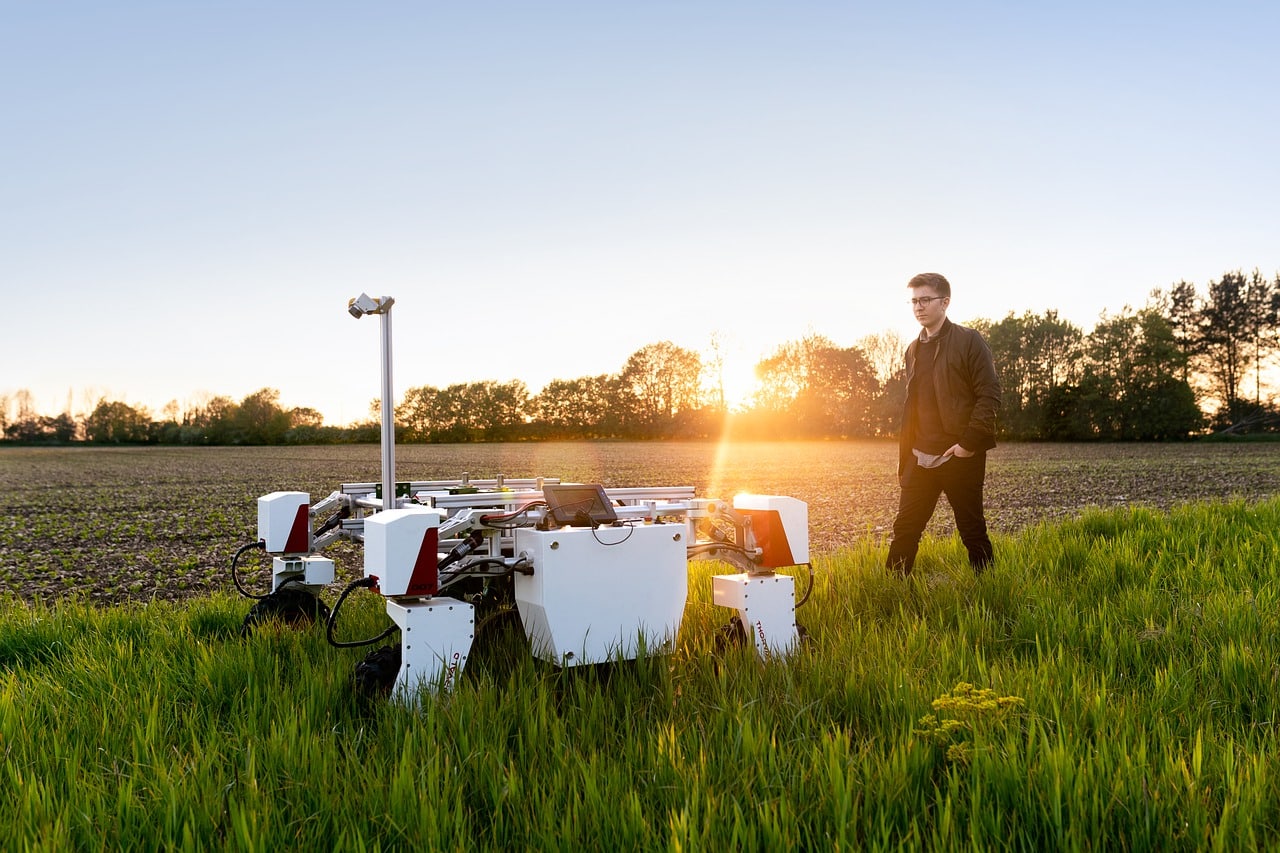Reportlinker.com announces the release of the report “Agricultural Robots Market by Type, By Applications, By Component, By Farming Type, and By End Use Global Opportunity Analysis and Industry Forecast, 2022, 2030” – https://www.reportlinker.com/p06312714/?utm_source=GNW
Along with reducing the human efforts and production cost; these robots help save time, maximize crop quality, as well as increase crop yield. Agribots are deployed to perform various operations like soil analysis, weed control, fruits picking, seed planting, harvesting, seed sorting, field farming, dairy farming, and others. The global agricultural robots market pegged a notable revenue in the year 2021, and is likely to project a significant growth rate by 2030.
Market Dynamics and Trends
The global agricultural robots market is proliferating, owing to technological advancements in the fields like IoT, robotics and Artificial Intelligence. Besides, the farmers switching towards sustainable development of agricultural land, to cater food-demand of the expanding population; is positively influencing the growth of the global market. Furthermore, factors such as minimized labor, increased efficiency as well as enhanced crop quality and quantity are expected to fuel-up the growth of agricultural robots market in future.
However, factors such as high installation cost of these agricultural robots, lack of internet connectivity in remote areas, lack of awareness among farmers, and incompetence of the robots to match human skills, are expected to hamper the growth of agricultural robots market during the forecast period.
Moreover, government initiatives to adopt modern agricultural techniques, requirements to monitor the health of crops to obtain better yield, innovative product launches by the market players as well as the R&D activities for sustainable agricultural development, are paving the way for lucrative opportunities in the global agricultural robots market.
Market Segmentations and Scope of the Study:
The global agricultural robots market share analysis is based on type, application, component, farming type, enduse and geography. Based on type, the market is segmented into driverless tractors, UAV, milking robots, automated harvest robots, and other types. Based on application, the market is segmented into dairy management, irrigation management, harvest management, soil management, inventory management, and others. Based on component, the market is divided into software, hardware, and services. Based on farming type indoor farming and outdoor farming. Based on enduse, the market is divided into field crops, fruits & vegetables, livestocks, and others. Geographic breakdown and analysis of each of the previously mentioned segments include regions comprising North America, Europe, Asia-Pacific, and RoW.
Geographical Analysis
North America is expected to dominate the global agricultural robots market holding the highest market share, owing to higher adoption of advanced technology, increase in research and development activities, and high per-capita disposable income.
Asia Pacific significantly represents the emerging economies and is anticipated to grow with substantially increasing market share, owing to increasing government initiatives to adopt modern technologies, rise in awareness among the farmers and raise in governmental subsidies to promote advanced agricultural techniques.
Competitive Landscape
The global agricultural robots market is fragmented and competitive in nature also consists of various market players. Some of the major market players include, Agrobot, Blue River Technology, AGCO Corporation, Naïo Technologies, Deere & Company, Agribotix LLC, Lely Industries, Trimble, Precision Hawk, Harvest Automation, AG Eagle LLC, and IBM among others.
The past endeavors and futuristic advancements, sum-up to comprehend the overall market growth. For instance, in August 2019, Hesston by Massey Ferguson from the AGCO Corporation introduced its new model MF1316S, the razor-edge pull-type disc mower conditioner, that is built to optimize crop quantity and quality, hence helping the operators to cut and condition more acres a day. The advantage is uniform windrows that dry faster and more evenly, enhancing the operator’s ability to form a heavy, dense, evenly shaped bale that preserves the quality of hay and forage.
Recently in January 2020, one of the key players of the global agricultural robots market, Naïo Technologies based in France announced its USD15.5 million expansion, in order to bring its autonomous farming robots to the United States, soon this year. These robots designed to improve farming efficiency as well as reduce dependency on chemical pesticides and herbicides; are a socioecological transition towards sustainable farming.
KEY MARKET SEGMENTS:
Global Agricultural Robots market, By Type
Driverless Tractors
Unmanned Aerial Vehicles (UAVs)
Milking Robots
Automated Harvest Robots
Others
Global Agricultural Robots market, By Application
Dairy Management
Irrigation Management
Harvest Management
Soil Management
Inventory management
Other Applications
Global Agricultural Robots market, By Component
Hardware
Software
Service
Global Agricultural Robots market, By Farming Type
Indoor Farming
Outdoor Farming
Global Agricultural Robots market, By End Use
Field Crops
Fruits & Vegetables
Livestocks
Others
Global Agricultural Robots market, By Geography
North America
U.S.
Canada
Mexico
Europe
UK
Germany
France
Italy
Rest of Europe
Asia-Pacific
China
India
Japan
Rest of Asia-Pacific
RoW
Latin America
Middle East
Africa
Read the full report: https://www.reportlinker.com/p06312714/?utm_source=GNW










